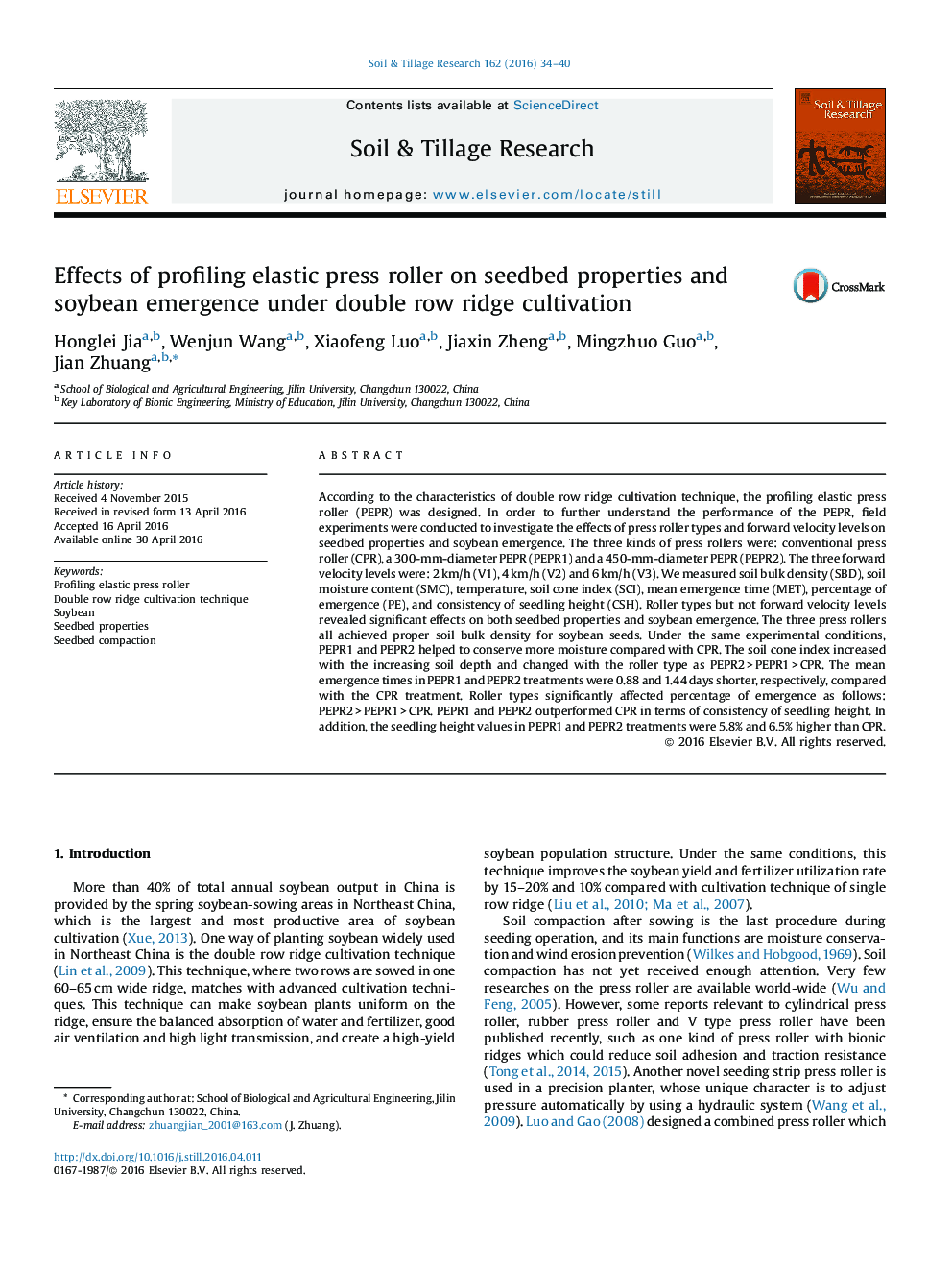| Article ID | Journal | Published Year | Pages | File Type |
|---|---|---|---|---|
| 305330 | Soil and Tillage Research | 2016 | 7 Pages |
•Investigate the effects of PEPR on seedbed properties and soybean emergence.•The soil moisture content in PEPR treatment is higher than that in CPR treatment.•The cone index in PEPR treatment is 34.6–61.5% higher compared with CPR.•The mean emergence time in PEPR treatment is lower than that in CPR treatment.•The PEPR produces the better consistency of seedling height.
According to the characteristics of double row ridge cultivation technique, the profiling elastic press roller (PEPR) was designed. In order to further understand the performance of the PEPR, field experiments were conducted to investigate the effects of press roller types and forward velocity levels on seedbed properties and soybean emergence. The three kinds of press rollers were: conventional press roller (CPR), a 300-mm-diameter PEPR (PEPR1) and a 450-mm-diameter PEPR (PEPR2). The three forward velocity levels were: 2 km/h (V1), 4 km/h (V2) and 6 km/h (V3). We measured soil bulk density (SBD), soil moisture content (SMC), temperature, soil cone index (SCI), mean emergence time (MET), percentage of emergence (PE), and consistency of seedling height (CSH). Roller types but not forward velocity levels revealed significant effects on both seedbed properties and soybean emergence. The three press rollers all achieved proper soil bulk density for soybean seeds. Under the same experimental conditions, PEPR1 and PEPR2 helped to conserve more moisture compared with CPR. The soil cone index increased with the increasing soil depth and changed with the roller type as PEPR2 > PEPR1 > CPR. The mean emergence times in PEPR1 and PEPR2 treatments were 0.88 and 1.44 days shorter, respectively, compared with the CPR treatment. Roller types significantly affected percentage of emergence as follows: PEPR2 > PEPR1 > CPR. PEPR1 and PEPR2 outperformed CPR in terms of consistency of seedling height. In addition, the seedling height values in PEPR1 and PEPR2 treatments were 5.8% and 6.5% higher than CPR.
